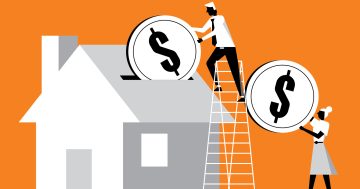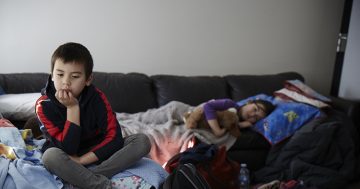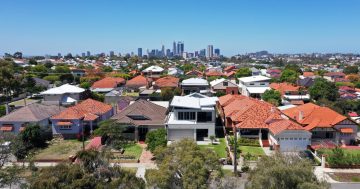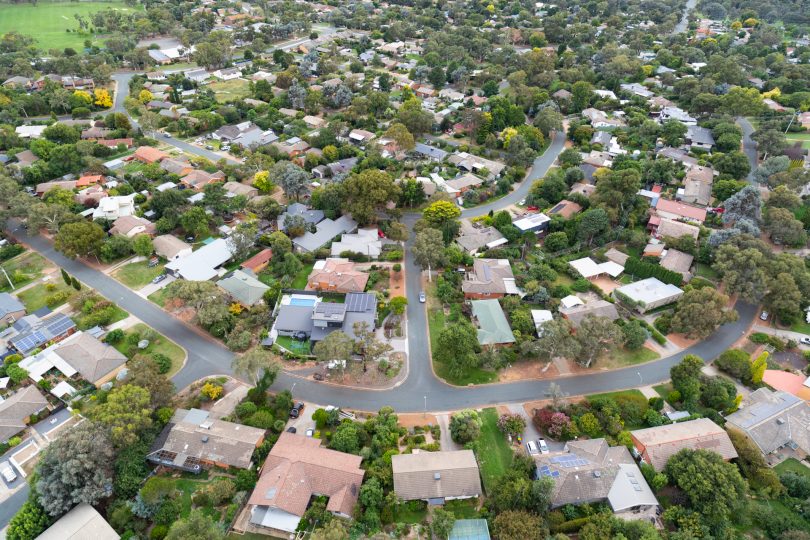
The report highlights a need for region-specific strategies to alleviate the pressure on renters, especially those in the most affected suburb groups detailed within. Photo: Michelle Kroll.
An “unprecedented level of rental stress” has been revealed in Suburbtrends’ January report, which founder Kent Lardner says has more than 58 per cent of tenants in Queensland and South Australia experiencing extreme hardship. The report calls for targeted policy interventions to address rental affordability, increase housing supply and control rate hikes.
With extreme low vacancy rates throughout the country limiting housing options for renters and the ongoing cost-of-living crisis, data shows a significant 46 per cent of all suburb groups fall into the report’s category of extreme rental pain.
Suburbtrends use their ‘Rental Pain Index’ (RPI) as a metric for the challenges faced by renters on a scale of one to 100. The former signifies the optimal conditions for renters, while the latter represents the worst.
The top 25 most affected suburb groups scored 100 on the RPI, with Durack in Queensland and Christie Downs in South Australia topping the list. Mr Lardner said the result was due to a combination of average rental increases and extreme low vacancy rates “exacerbating the situation”.
“This is not an isolated issue; it’s a nationwide problem that requires immediate and comprehensive policy action,” he said.
“The data calls for urgent, multifaceted policy solutions to address the soaring rental costs and limited housing availability. It’s time to turn these insights into action.”
Across the suburb groups rental affordability shows to have exceeded 35 per cent of income, which the report states is far beyond the threshold typically associated with financial strain.
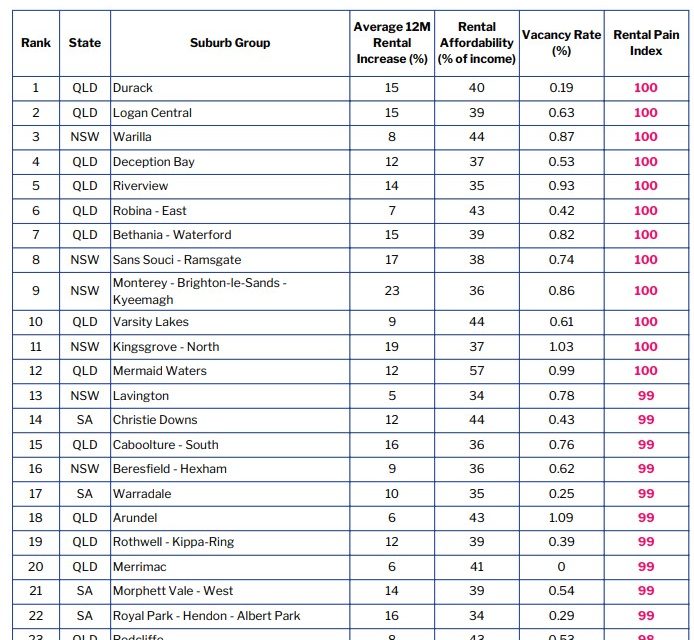
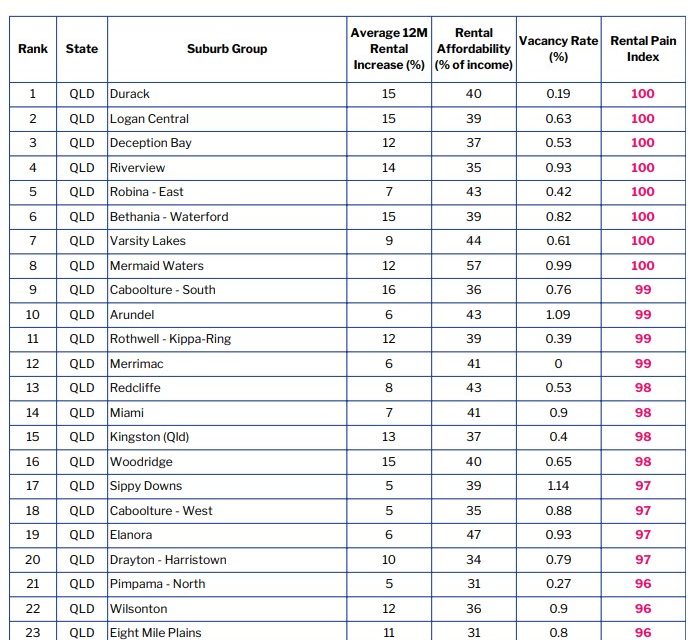
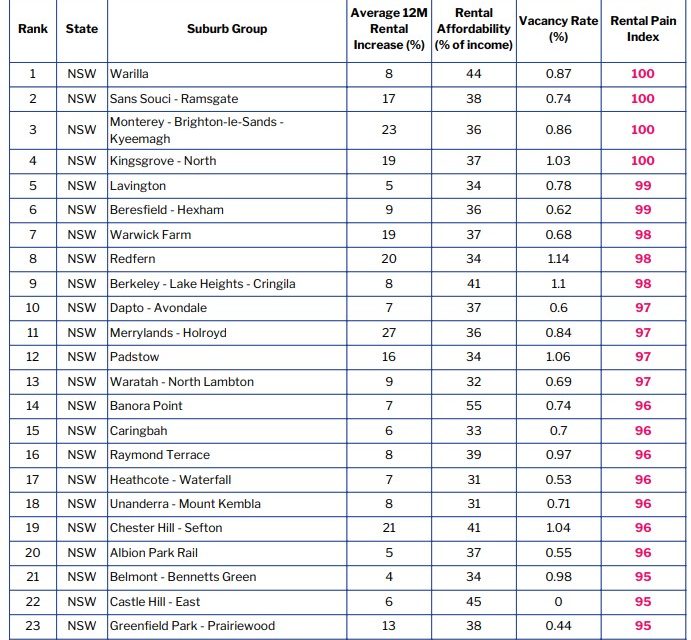
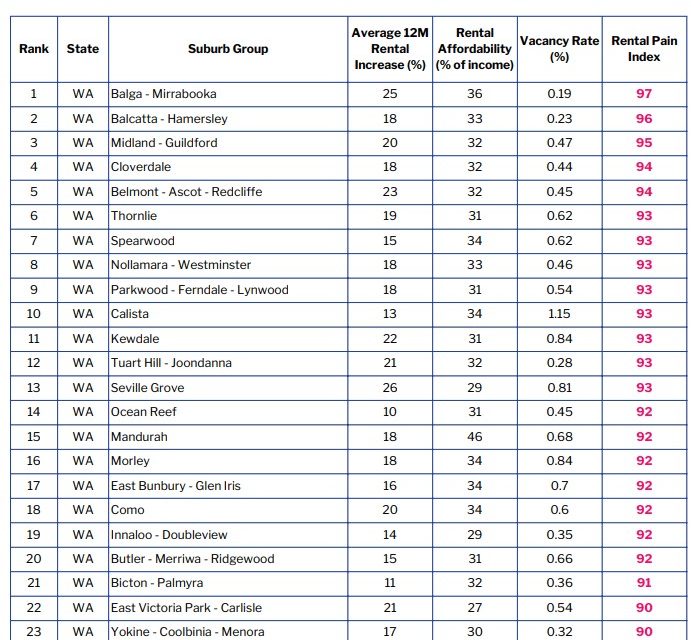

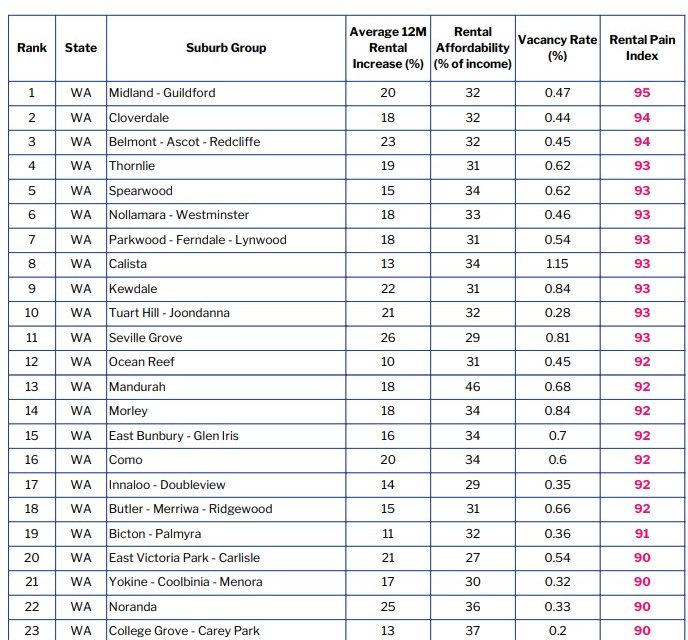
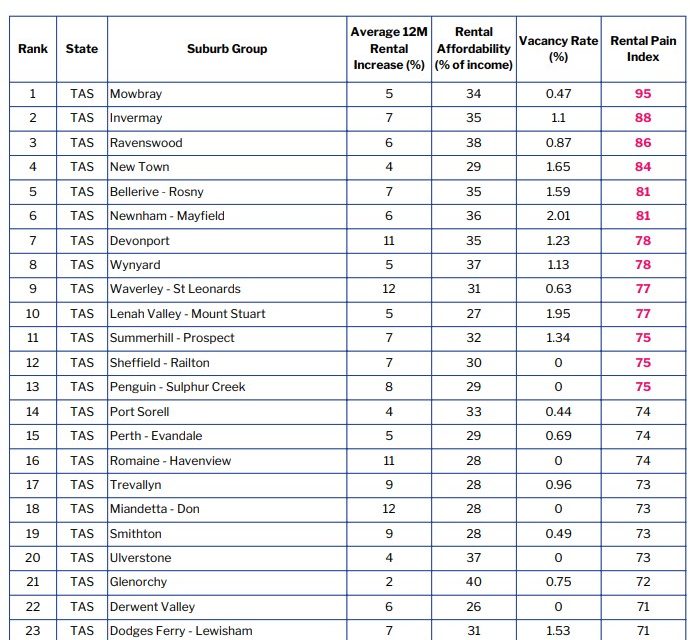
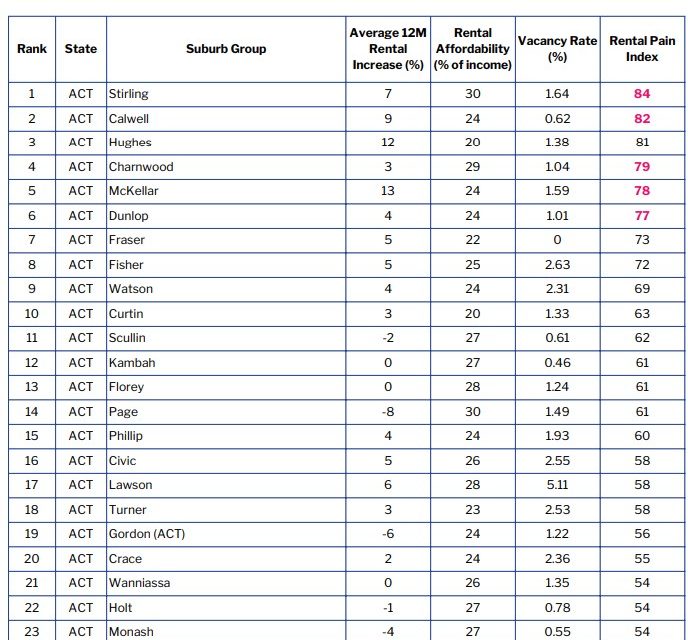
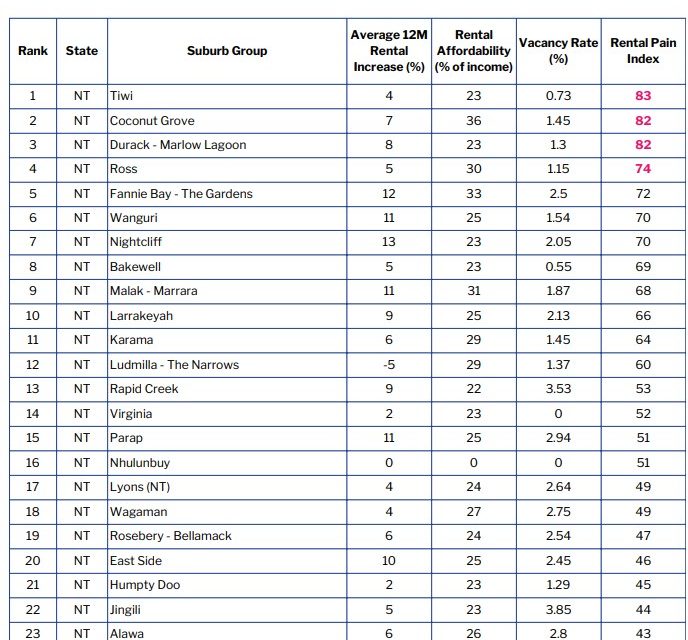
In the worst affected state of Queensland, suburbs topping the list have experienced significant average 12-month rental increases (7-15 per cent), and a high percentage of median household income dedicated to rent (57 per cent in Mermaid Waters).
Meanwhile in NSW, although there are fewer suburbs in the top 25, half of the state is still facing extreme rental pain. Regions such as Warilla, Sans Souci, Brighton-le-Sands and Kyeemagh have seen high rental increases (up to 23 per cent) and up to 44 per cent of household income spent on rent.
South Australia has a lower overall percentage of suburbs enduring extreme rental pain in comparison with Queensland and NSW, yet the Christie Downs and Warradale regions are still present in the top 25 list.
Data from Victoria (44 per cent) and WA (45 per cent) show suburbs are facing moderately high levels of rental pain. While the ACT (6 per cent), NT (11 per cent), and Tasmania (12 per cent) host less examples of extreme rental pain, they still represent a significant number of people.



